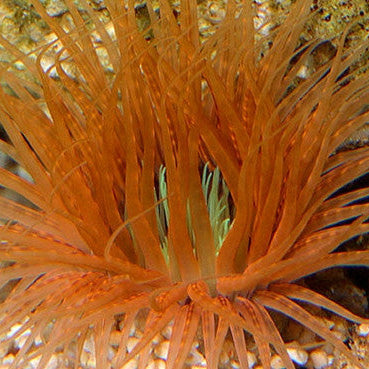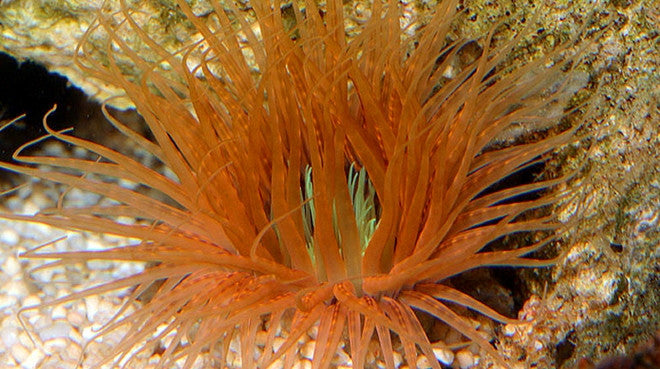Black Friday SALE 50% OFF ALL Frags & 25% OFF ALL Colonies
Orange Tube Anemone
$ 59.99
Please select all options.
How to Care for Orange Tube Anemone
written by Dave Burr
Unlike many other anemones, Tube Anemones do not host clownfish and do not move around the aquarium. Just bury their tube in the sand bed and they will stay there.
Tip: The Orange Tube Anemone has a long tube that should be buried in the substrate of your aquarium. Leave the open end of the tube, with the tentacles, sticking out of the substrate. It can be placed in a partially shaded area, or out in the open.
Sting: Although numerous tube anemones may be kept close together they can sting corals so make sure to leave space around them. Tube anemones can eat small fish, however this is quite rare. Fish know to stay away from them.
Placement: Create a trench in the sand bed and place the anemone in it. Cover the tube leaving only the open end of it protruding from the sand. You may place several Tube Anemones together as they do not sting each other.
Feeding: Feed marine snow, mysis shrimp, or chopped meaty foods and watch the tentacles grab the food.
Lighting & Flow Requirements: The Orange Tube Aneomne requires moderate water flow and moderate lighting (PAR 180-280). T5's, Metal Halides, or LED's can all maintain Long Tentacle Anemones when the proper PAR levels are provided. We recommend a 14-20K color spectrum for best coloration.
Care Level: Moderate
Lighting Requirements: Low to moderate (PAR 120-250)
Water Flow: Moderate
Aggressiveness: Semi-ggressive
Range: Indo-Pacific
Family: Cerianthidae
Water Conditions: 75-80° F; sg 1.024-1.026 (1.025 is ideal); pH 8.1-8.4 Ca 420-440 ppm, Alk 8-9.5 dKH, Mg 1260-1350, Nitrates <10ppm, Phosphates, < .10ppm
Water Chemistry: It is important that proper calcium (420-440 ppm), alkalinity (8-9.5 dkh - run it 7-8 if you are carbon dosing) , and magnesium levels (1260-1350 ppm) are maintained. Raising magnesium levels gradually up to 1400-1600 ppm can help to combat algae outbreaks, just keep CA and Alk in line as you raise the Mg. Nitrates should be below 10 ppm and phosphates should be below .10 ppm. We recommend doing a water change when Nitrate levels rise to 10 ppm. It is important to replace your phosphate media when phosphates rise to .10 ppm. Media Reactors make the most efficient use of your phosphate media by fluidizing it.
Dosing: Vivid Aquariums uses and recommends dosing pumps to automate the dosing of additives and keep your levels more constant. A dosing pump can alleviate the chore of manually dosing your aquarium with Ca, Alk, & Mg 2,3, or 4 times per week and will benefit your aquarium by keeping your levels constant through frequent small additions of Ca, Alk, & Mg. Our tanks all progressed when we switched from 3 manual dosings per week to 70 automatic dosings per week and we got a lot more work done.
Category: 50-75, Anemones, ceriathus-membranaceus, low-to-moderate-lighting, moderate
Type: Invert



